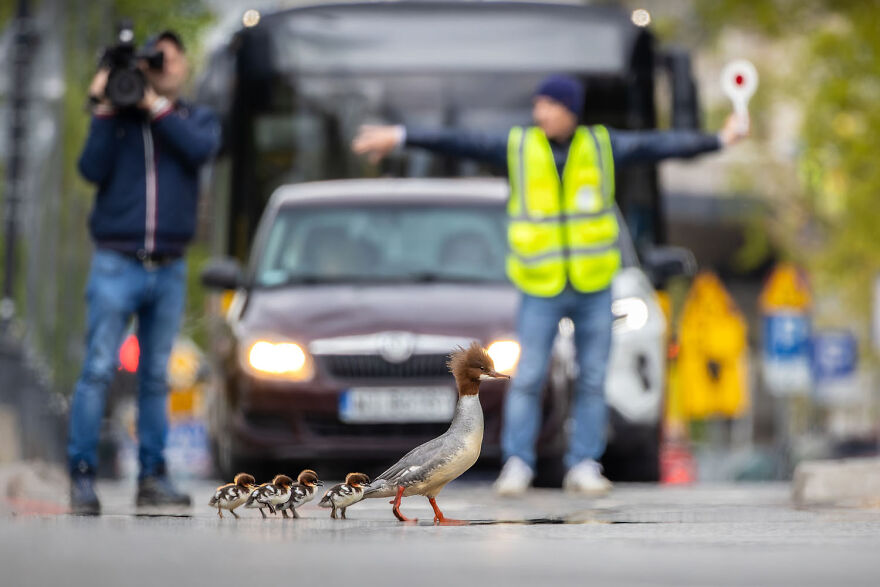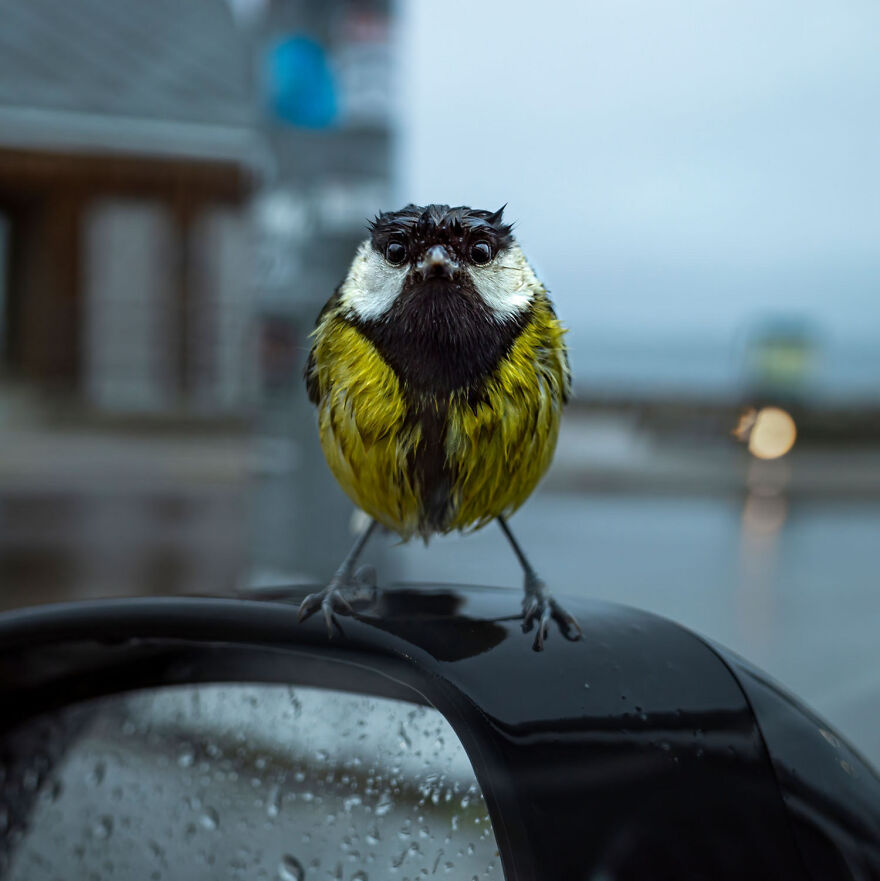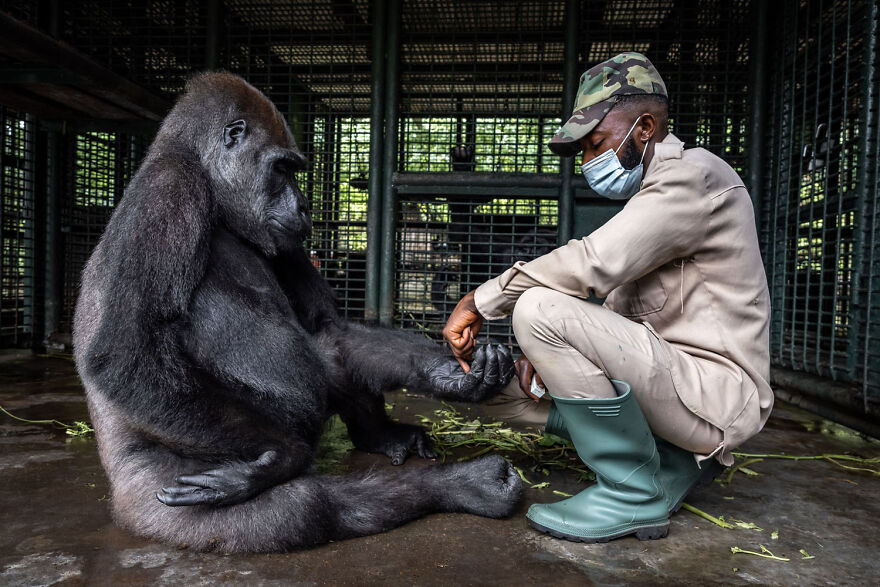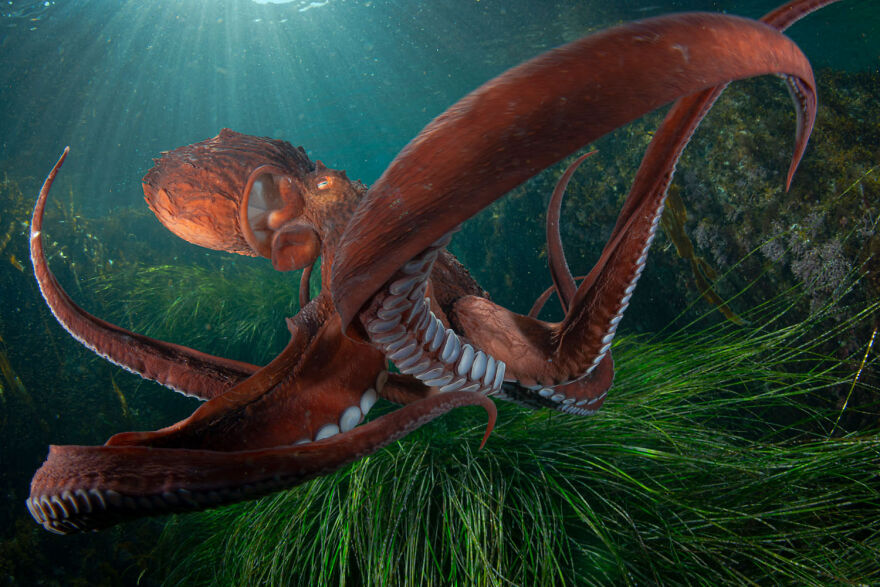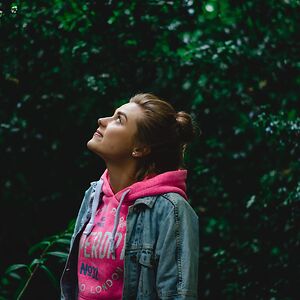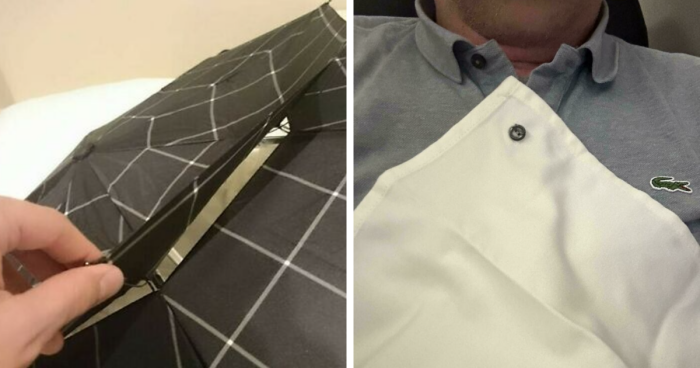
34Kviews
20 Wildlife Photos From The Finalists Of The 2024 European Photography Contest
InterviewThe winners of the 2024 European Wildlife Photographer of the Year awards have been announced. Launched in 2001, this competition is one of the most prestigious in modern nature photography. This time, it drew submissions from photographers across 38 countries, with a total of 18,000 images entered.
Organized by the GDT (Gesellschaft für Naturfotografie), the competition features finalists across nine categories: Birds, Mammals, Other Animals, Plants & Fungi, Landscapes, The Underwater World, Man and Nature, Nature's Studio, and two Young Photographer categories (up to 14 years and 15–17 years). In addition, there are two special categories: the Fritz Pölking Prize and Junior Prize, as well as the Rewilding Europe Award.
The 2024 Overall Winner—and thus the European Wildlife Photographer of the Year 2024—is Spanish photographer Jaime Rojo, with his breathtaking image titled “In the Forest of the Monarchs.” Bored Panda had the privilege of speaking with the grand prize winner, as well as another finalist, Kjell Vikestad, a Norwegian photographer whose humorous image of a great tit captured the hearts of our community.
Be sure to scroll down to explore the incredible selection of images from the finalists of the contest and to learn more about the participants and their winning photographs.
More info: gdtfoto.de | Instagram | Facebook
This post may include affiliate links.
Man And Nature, Runner-Up: New World By Grzegorz Długosz
For common mergansers (Mergus merganser) in Warsaw, the breeding season has become rather stressful. Ducklings hatch in a park about one kilometre away from the river Vistula. Each female duck has to relocate its ducklings to the river as quickly as possible because this is the only place in the park with food and shelter. To get to the river, the ducks must cross two canals and go through three underground passages created especially for this purpose. The final obstacle is a wide six-lane motorway. Every year, a group of volunteers help the ducks cross this dangerous road by holding up traffic. This image shows a duck crossing a smaller road because it refused to use the nearby dark underground passage. The volunteer blocks traffic while the cameraman captures the scene. Let's hope there will always be enough volunteers to stop traffic for ducklings.
Canon EOS R6, 4.5-7.1/100-500mm, ISO 6400
We reached out to Jaime Rojo, whose captivating photograph earned him a winning spot in the GDT’s prestigious awards. Our conversation centered on the awe-inspiring natural phenomenon of monarch butterfly migration, and the photographer graciously agreed to answer our questions.
To start, Rojo shared his observations from the time he spent in the forest, watching the butterflies: “I’ve been working with monarchs for 20 years, but each visit teaches me something new.” The photographer continued: “On one of my recent trips for this assignment, I witnessed firsthand the different strategies birds use to prey on monarchs during hibernation—something that is rare to see and even harder to photograph. Monarchs are toxic because, as caterpillars, they feed on milkweed and store the plant’s toxins as their first line of defense. These toxins are stored in the scales that cover their wings and bodies. However, some birds have learned to cope with the effects of the toxins. Grosbeaks are gluttonous and eat the abdomen whole, including the toxic scales, but after feeding for a while, they must stop because they start feeling sick. Tanagers and orioles, on the other hand, are like surgeons—they use precise incisions in the abdomen to extract the nutritious fat while avoiding the toxic scales, allowing them to feed for longer periods.”
Birds, Runner-Up: Angry Bird By Kjell Vikestad
At the ferry terminal in Hella, Norway, the birds have become accustomed to being fed bread crumbs by waiting motorists. Conditioned to be fearless, they often land directly on cars hoping for a small snack. Although I had nothing to offer, I took the opportunity to take a few shots of this wet and hungry great tit (Parus major).
Ricoh GR III with 18.3mm, ISO 200
Man And Nature, Highly Commended: Healing Therapy By Gerard Carbonell
Twiggs, an orphaned female lowland gorilla (Gorilla gorilla), was rescued from being sold as a pet at a Cameroon market in 2003. She was traumatised and had a disabled arm due to a lesion that probably occurred when her mother was killed by hunters. Since her arrival at Limbe Wildlife Centre, Twiggs has been rehabilitated by a devoted team of caregivers who spend more time with her than with their own families. In the photograph, the now adult gorilla is receiving physiotherapy from Cyrile, one of the few people she trusts. Cyrile also found refuge at the sanctuary after being forced to flee his village with his little brother and quit his university studies when a rebel group caused disruptions. Cyrile was studying forestry engineering with the aim of working in wildlife conservation.
OM System OM-1, Zuiko 2.8/12-40mm, ISO 500
When asked about the biggest challenges he faced while shooting in the forest—especially given the delicate ecosystem and the vulnerability of the butterflies' habitat—Jaime responded: “Working in such a sensitive environment requires great care and respect for both the habitat and the butterflies. The oyamel fir ecosystem is fragile, and monarchs are highly sensitive to changes in temperature, light, and human presence. The local communities play a crucial role in regulating visitor access to the sanctuaries, ensuring the protection of this unique space. For this project, I had to obtain several special permits, which made me even more aware of the privilege it is to work in these sanctuaries. I always prioritize minimizing my impact, often working under challenging conditions to ensure the environment remains undisturbed. I am deeply grateful for the support I’ve received from the keepers of the land and the managers of the protected area, who have made this work possible.”
Underwater World, Highly Commended: Giant Pacific Octopus By Andrey Shpatak
Every year in autumn when the water cools down to around five degrees Celsius, giant Pacific octopuses (Enteroctopus dofleini) migrate to shallow waters. During a morning dive near the Russian town of Rudnaya (Sea of Japan), I came across this imposing individual. Although the octopus fled immediately, I did manage to get a few shots against the backdrop of bright green tufts of seagrass (Zostera marina).
Nikon D800, 3.5-4.5/8-15mm, ISO 500, Sea&Sea UW housing, 2 Sea&Sea UW flashes with diffuser
Overall Winner: In The Forest Of The Monarchs By Jaime Rojo
Huddled together, overwintering monarch butterflies (Danaus plexippus) hang in the trees of Mexico's El Rosario Monarch Butterfly Sanctuary. At these high altitudes it is cool and relatively humid, and the monarch butterflies have adapted to the same ecological conditions as the trees, mostly Oyamel firs (Abies religiosa). The butterflies are well protected from the elements by the tree canopy and also by their congregation in huge numbers, but even the smallest changes in the forest cover can have a negative impact on the sensitive microclimate to which the butterflies have adapted. Despite the conservation measures that led to the establishment of the protected area, deforestation was still a problem in the early 2000s. A Mexican-led international coalition of governments and non-profit conservation organisations established a trust fund during this time to work with local communities to reduce the rate of deforestation, which has been steadily declining since 2009.
Nikon Z9, 100-400mm, ISO 800
The GDT’s winner also shared with us which particular moments stood out to him while photographing the monarchs and the forest: “One unforgettable moment was the exact time I captured The Forest of the Monarch, the photo that went on to win the European Wildlife Photographer of the Year award.” Jaime then continued: “That afternoon, I noticed something different about the quality of the light and knew there was an incredible opportunity for a photo. I had requested a special permit to stay after hours in the sanctuary, and as the light turned golden, I suddenly heard a loud cracking noise in the forest. My local guide went to investigate and discovered that a branch, loaded with millions of monarchs, had broken and fallen—a sight I had never seen before. At that moment, I was torn. I had a rare chance to capture the stunning sunset in the forest of the monarchs, but I also wanted to document the fallen branch. I managed to grab a few frames of the sunset before running downhill to find the branch. It was an incredible and surreal experience.”
Mammals, Highly Commended: Ermine With Prey By Herfried Marek
This photograph shows an ermine (Mustela erminea) in its winter coat shortly after catching a mouse. As so often, I was out and about near my home town of Wörschach in search of photo motifs. Near a small stream, I came across an ermine hunting. I immediately unpacked my photographic gear (included a camouflage net) and lay down flat on the ground to wait. After two hours, the ermine came straight towards me, prey in mouth, and I was able to capture this exciting moment.
Nikon Z9, 6.3/800mm, ISO 1000
Birds, Highly Commended: Gannet With Nesting Material By Danny Green
I took this picture on Great Saltee, Republic of Ireland. I had visited the Saltee Islands many times in the past, but it had been quite a number of years since my last trip. In May 2023, I arrived just as the gannets (Morus bassanus) were beginning to collect their nesting material. With beaks chock-full of vegetation, these seabirds - always somewhat clumsy-looking on land - were simply hilarious.
Canon 1Dx MKIII, 4.0/500mm, 1.4x converter, ISO 640
Our final question focused on the photographer's future plans to expand on this project or explore similar environmental themes in his work. Here’s what we learned: “The monarch butterfly migration has been a central theme in my work, and it will continue to be. I am currently partnering with Vital Impacts to sell fine art prints of my monarch butterfly work, with 60% of the proceeds supporting two organizations that carry out critical Monarch conservation efforts. In the fall of 2025, I will begin a speaking tour as part of the National Geographic Live series to share the story of the monarchs with even more people because I believe storytelling is a fundamental part of our work as conservationists. I’m also developing a coffee-table book about the monarchs—something I’ve always wanted to do. And, of course, there is life beyond Monarchs. I’m currently working on a project, supported by the National Geographic Society, focused on rewilding efforts in the borderlands between the U.S. and Mexico, where the border wall has significantly impacted animal movements. My goal is to continue exploring issues at the intersection of biodiversity conservation, wilderness, climate change, and human impact. I’m particularly interested in the role of protected areas worldwide and how this powerful concept can help us achieve even greater conservation goals.
Mammals, Highly Commended: The Night Of The Lynx By Felix Heintzenberg
I have been using camera traps and flashes to photograph lynx (Lynx lynx) in southern Sweden for over six years. After many attempts with classic image composition, I tried to rethink my approach. My aim was to photograph a backlit lynx on a tree trunk at night as a silhouette with a "golden edge". A softened main flash, whose light was bundled through a narrow tube about 40 cm long was intended to simply reflect the animal's eyes. The gentle rain that night was a welcome bonus.
Canon EOS 700D, 4.0/70-200mm, ISO 400, 3 flashes
Other Animals, Highly Commended: About Turn By Norbert Kaszás
I photographed this greater bee fly (Bombylius major) in spring in the Hungarian Danube-Ipoly National Park. It was early in the morning and the animal was still sluggish after a cold night. This gave me the opportunity to try out different perspectives. I liked this one best because the little insect with its furry body looks so funny from behind.
Canon EOS 90D, 2.8/100mm Macro, ISO 400, tripod
As mentioned earlier, we reached out to Kjell Vikestad, the photographer behind the “Angry Bird” shot, which was the Runner-Up in the Birds category of the 2024 European Wildlife Photographer of the Year contest. The Norwegian photographer shared with us that although his work is not specifically focused on wildlife, he enjoys capturing photos of birds as part of his broader interest in nature. He explained: “I mostly take landscape and nature photos, and have always appreciated hiking in nature. My interest in animal photography has grown in the past years. Some days I have my own little safari in our garden taking photos of insects with a macro lens.”
Underwater World, Highly Commended: Yin & Yang By Melanie Müller
Off the coast of the island Guraidhoo (Maldives), two reef manta rays (Mobula alfredi) display a typical feeding behaviour: They swim in circles while filtering plankton out of the water. Fascinated by this special "dance", I watched these two individuals for quite some time. Then I had the idea of capturing the moment in which the black back of one animal forms a contrast to the white belly of the other individual. As the rays approached each other, I held my breath, dived down and tried my luck ...
Sony ILCE-1, 2.8/16-35mm, ISO 800, Ikelite UW housing
Mammals, Runner-Up: Shaking Off The Snow By Daniel Valverde Fernandez
This picture was taken in Wapusk National Park on the coast of Hudson Bay, Canada during a heavy snowstorm in November 2022. With a single vigorous movement, the polar bear (Ursus maritimus) shakes off the powdery snow that has accumulated during the storm. A gust of wind picks up the snow and forms a decorative veil around the animal. It is truly amazing that these animals seem perfectly comfortable in such inhospitable conditions.
Canon EOS R3, 4.0/600mm, 1.4x converter, ISO 2000
The “Angry Bird” photo conveys a lot of personality in the captured great tit. We were curious if this was the photographer's intention or simply a happy accident. Vikestad responded: “I’m used to seeing birds begging for food when I’m waiting for the ferry at Hella. On this particular day, the birds were very wet and hungry. I noticed that this made them less afraid, allowing me to take several close-up photos. However, it was a bit of luck that one of the birds ended up in this particular pose.”
Lastly, we were curious about how Kjell sees the role of humor in photography as part of storytelling. He told us: “Humor is an important part of being a human. Humorous photos of animals will perhaps make more people relate to wild animals.”
Underwater World, Winner: Night Crawler By Angel Fitor
A common octopus (Octopus vulgaris) crawls across the seabed at night in search of prey. Thanks to a sophisticated combination of tactile abilities and nocturnal vision, octopuses are among the most effective nocturnal hunters in the sea. Everything about how octopuses perceive the world is beyond our imagination. In addition to their unique eyes, octopus skin contains special light-sensitive proteins called opsins that allow the entire body to perceive light. Given this, it is not surprising that these animals use more than two-thirds of their brain for visual processing. Although colour-blind, octopuses use polarised vision to improve contrasts and detect enemies, conspecifics and even camouflaged prey. Last but not least, the position of the eyes on an octopus' head and its horizontal pupils mean that the animals have 360° vision with no "blind spots". Who can beat that?
Nikon D800, Tokina 3.5-4.5/10-17mm, ISO 80, Anthis Nexus UW housing, 2 Retra UW flashes
Plants And Fungi, Winner: Curtain By Svetlana Ivanenko
During a visit to the Lossiny Ostrov National Park (Russia), I found several parasol mushrooms (Macrolepiota procera). The pronounced lamellae under the cap of one of the mushrooms immediately caught my attention. With the help of a torch, I wanted to emphasise their elegant structures. I deliberately underexposed the shot slightly to emphasise the beautiful curves of the lamellae. The result reminds me of the front curtain in a theatre.
Sony Alpha ILCE-7M4, 2.8/90mm Macro, ISO 1600
Underwater World, Runner-Up: Blue And Red By Francesco Visintin
In a pond in Parco Nazionale delle Foreste Casentinesi (Italy), common frogs (Rana temporaria) congregate once a year for the sacred ritual of reproduction. In the chill of early spring, the dance of nature unfolds, a testimony to the enduring spirit of life and renewal.
Nikon D7200, 3.5-4.5/10-17mm, ISO 320, Isotta UW housing, 2 Nikon UW flashes
Other Animals, Highly Commended: March Of The Mussels By Theo Bosboom
I photographed this colony of mussels (Mytilus edulis) in the intertidal zone of Praia da Ursa, a spectacular beach on Portugual's west coast. Although the mussels were firmly attached to the rocks, they remind me of a marching army with the shells looking like soldiers' shields. With a little imagination, they look like a scene from Lord of the Rings or Game of Thrones. I took the photograph with a probe lens from Laowa. This long, thin, wide-angle macro lens was carefully positioned to capture the mussels large and up close from above and also include the spectacular backdrop of Praia da Ursa. I extended the depth of field with the help of focus stacking.
Canon EOS R5, Laowa 24mm probe lens, ISO 200, tripod, 10 images in focus stack
Rewilding Europe Award, Highly Commended: King Of The East By Florian Smit
This photograph shows one of the numerous European bisons (Bison bonasus) reintroduced to Poland's Bialowieza National Park near the border with Belarus. In 1927, the last free-living bison in the Caucasus was shot and the species was considered extinct in the wild in Europe. With the help of a small group of animals from zoological gardens and private owners, the European bison was saved from extinction. As of 2023, around 7,200 individuals exist in Europe. However, habitat fragmentation and low genetic diversity continue to pose challenges to the survival of this species.
Nikon D810, 2.8/400mm, 2x converter, ISO 800
Speaking of repopulation, Chernobyl Exclusion Zone has now (almost 40 years later) become a wildlife paradise. Species previously thought extinct or close to it (Przewalski's horse is a great example) are proliferating. Makes me wonder if all of our efforts aren't as good as just removing human interference from the equation... 40 years aren't even a blink in planetary time, yet renewal of this scale speaks for itself.
Mammals, Highly Commended: Bad Hair Day By Christian Biemans
During my visit to Svalbard, I was able to observe numerous Svalbard reindeer (Rangifer tarandus platyrhynchus), a small subspecies of the reindeer common in northern Europe. During the summer months, these animals lose their thick winter coat. On a hike, I watched as a strong gust of wind blew off a large part of this reindeer’s winter coat. Even the reindeer looks a little surprised.
Canon EOS 5D Mark IV, 4.0/500mm, 1.4x converter, ISO 1000
Plants And Fungi, Highly Commended: Cordyceps By Jaime Culebras
Cordyceps are parasitic fungi that infest invertebrates. The fungi influence their hosts' behaviour, causing insects to climb up high and grasp onto exposed vegetation with their legs or pincers. Here the host dies while Cordyceps spores are released and spread by the wind. I found this wasp infected by a Cordyceps fungus on a branch in the rainforest near the town of Golfito, Costa Rica.
Sony Alpha 7RIV, 2.8/90mm, ISO 100, tripod, flash with softbox
Young Photographers To 14 Years, Winner: The Young Guardian By Alberto Román Gómez
On the day this photo was taken, my father picked me up after school and we drove to an agricultural area on the edge of the Sierra de Grazalema Nature Park. We were able to take some nice pictures, and, on the way home in the car, I saw a young stonechat sitting on a fence and repeatedly flying to the ground to prey on small insects. One time, it returned to perch on the fence right next to a lock - as if to stand guard.
Olympus M1 MARK III, 5.6-6.3/100-400mm, ISO 500, bean bag
Landscapes, Highly Commended: Blood Of The Earth By Salvo Orlando
A huge stream of lava flows from an eruptive fissure into the deserted Valle del Bove in the south-eastern crater of Mount Etna (Italy). Sulphurous vapours colour the surrounding rocks bright yellow. Positioned at a distance away from the intense heat, I extended my tripod with the camera already mounted, held it up as far as I could above the glowing lava lake, and then took this shot with a remote shutter release.
Canon EOS R5, 4.0/16-35mm, ISO 100, tripod
OK, now THIS is why we come to Bored Panda. Thank you for something lovely!
I’m awed! Both with nature for creating such beauty and the photographer for capturing it. Thank you for publishing these pictures.
OK, now THIS is why we come to Bored Panda. Thank you for something lovely!
I’m awed! Both with nature for creating such beauty and the photographer for capturing it. Thank you for publishing these pictures.

 Dark Mode
Dark Mode 

 No fees, cancel anytime
No fees, cancel anytime 


